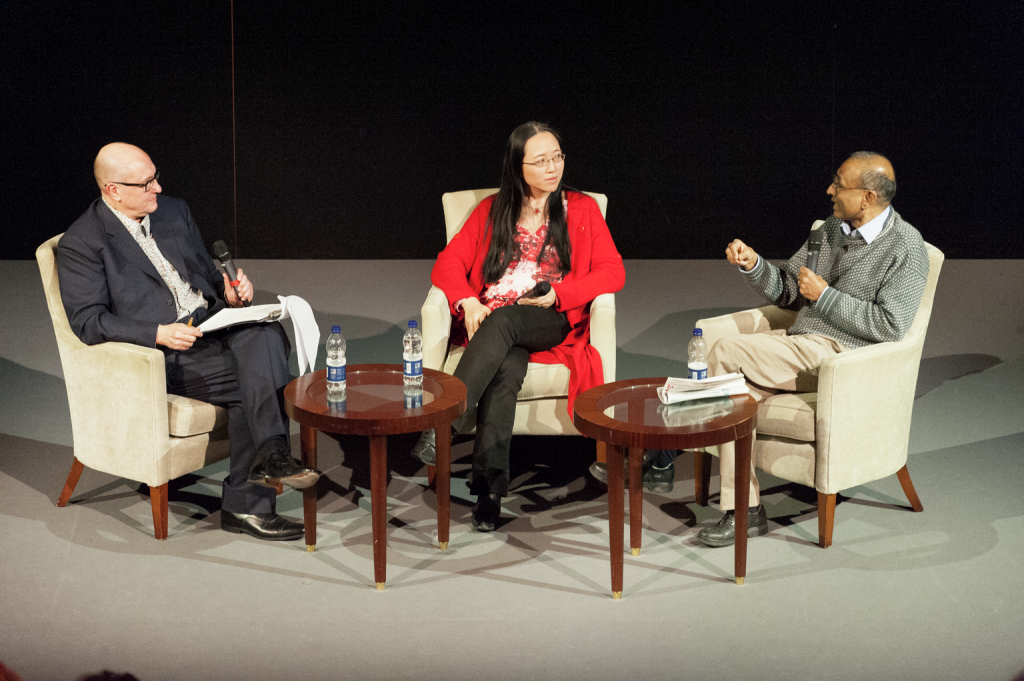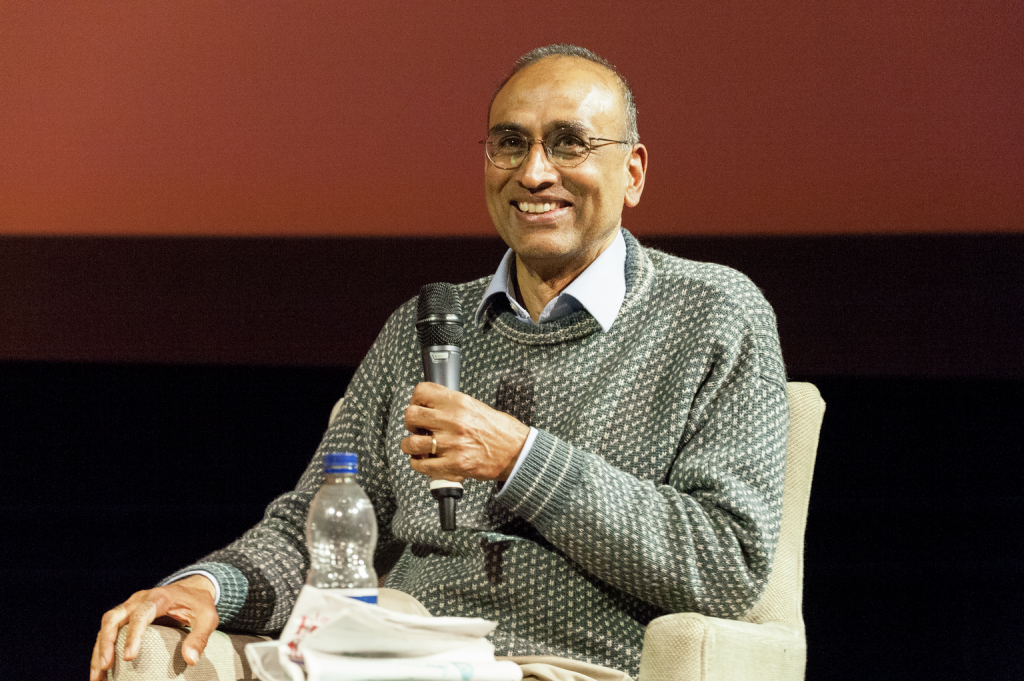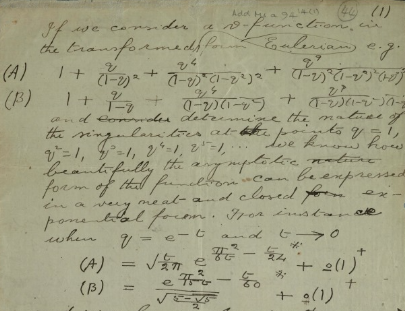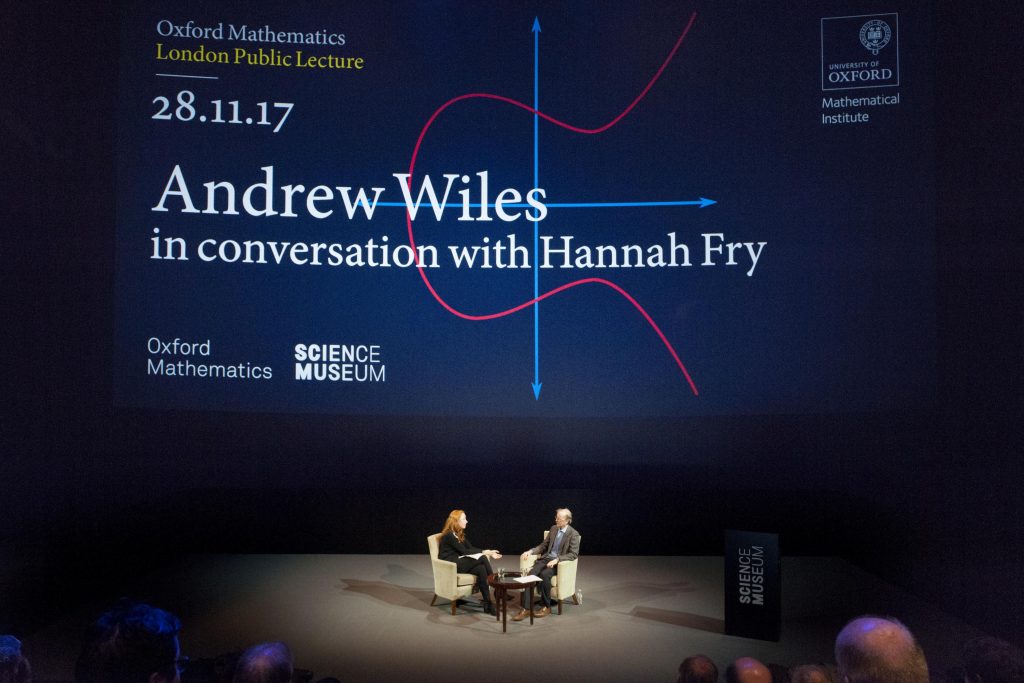How did the astounding autodidact Srinivasa Ramanujan achieve his profound and intuitive grasp of mathematics?
The gnomic style of Ramanujan, one of the most extraordinary figures in the history of mathematics, was among the topics covered during a recent wide-ranging discussion of his impact on culture, before a special screening in the IMAX of the biographical drama The Man Who Knew Infinity.

With me was the Indian-born president of the Royal Society, the Nobel prize-winner (and self-proclaimed ‘failed mathematician’) Dr Venki Ramakrishnan, and Dr Eugenia Cheng, Scientist-in-Residence at the School of the Art Institute of Chicago, author of Beyond Infinity: An expedition to the Outer Limits of Mathematics, shortlisted for the Royal Society science book prize.
Some psychologists would say that Ramanujan could harness a process in his brain that gave him deep insights into infinities and more without the use of analytical reasoning. Yet mathematical intuition probably works like intuition in everyday life, and also rests on some blend of experience and rapid pattern spotting that we can’t quite explain.
However, Ramanujan, who died in 1920 aged just 32, had an altogether stranger explanation for his wellspring of creativity. He gave credit to Namagiri, a local incarnation of Lakshmi, the Hindu goddess of good fortune.
Much has been made of how Ramanujan credited his profound insights to the Hindu goddess, said Eugenia. But, she added, ‘that was his way of expressing flashes of inspiration.’

‘We all use our intuition at the beginning of the mathematical process’ she explained. ‘It is very difficult to describe where that feeling comes from…the logic part only comes in afterwards.’
Mathematical intuition is harder to teach than constructing rigorous proofs, she added, and Ramanujan’s notebooks – examples of which can be seen in the museum’s exhibition 5000 years of Science and Innovation – would provide a rich source of inspiration for other mathematicians
Ramanujan, born 22 December 1887, was raised in Southern India and, as a result of his remarkable mathematical skills, the then clerk at the Accountant-General’s office at the Madras Port Trust Office was invited to Trinity College, Cambridge.
There the eminent British mathematician Godfrey Harold (G. H.) Hardy and his collaborator John E. Littlewood, recognised the raw talent of Ramanujan’s work, which he had recorded in notebooks and tried to capture in a letter to Hardy.

Venki described how Hardy was intrigued by the letter from this obscure Indian clerk because he recognised some of the results but, importantly, spotted some that were not generally known.
His visceral insights enabled Ramanujan to excel in pure mathematics, notably number theory, a field that focuses on whole numbers, how to build them, how they behave and how they interact, explained Eugenia.
Maths research consists of intuition to “guess” results but of course you need logical proofs to convince others and, by helping to provide this rigour, Hardy complemented Ramanujan’s extraordinary insights.
Among his achievements in mathematics, Ramanujan built a bridge between number theory and analysis, another field in mathematics, which was extraordinary because the former mostly focuses on whole numbers and the latter on continuously-changing quantities.

In his second letter to Hardy, Ramanujan shared the following result, which looks either bonkers or poetic, depending how charitable you feel:
1 + 2 + 3 + 4 + … = -1/12
Ramanujan admitted that he didn’t dare put it in the first letter to Hardy because anyone – not least Hardy – would think him crazy to propose such an equation, said Eugenia. But it did make sense, she added, when making connections between number theory and analysis. Maths is not so much about getting the right answer, she said, but ‘about creating worlds in which different answers can be true.’
Ramanujan had extraordinary ways of understanding a series of the kind seen on the left side of the equation without the numbers all just being lumped together as an infinity. ‘I think this gives a sense in which he was the “man who knew infinity,’ she said.
This insight opened up ‘all sorts of possibilities,’ she said because building bridges between different fields of mathematics has much further reaching implications than solving individual problems, as alluded to in an earlier IMAX discussion between Dr Hannah Fry and Sir Andrew Wiles, who made global headlines in 1994 when he reported that he had cracked Fermat’s Last Theorem.

Venki discussed perhaps the most famous anecdote about Ramanujan, when Hardy took a taxi to visit him and had remarked that the number of his cab, 1,729, was uninteresting. Ramanujan had replied that, to the contrary, it was the smallest number expressible as a sum of two cubes in two distinct ways.
Today, it is often called the taxi-cab number (for example, in the Science Museum’s event on maths and The Simpsons) but Venki said that this was not a sign of Ramanujan’s intimate relationship with numbers, as is often claimed, but because he had already encountered the number in his work on Fermat’s Last Theorem – 1729 was a ‘near miss’.
Although, he doubted most people in Cambridge today would know about Ramanujan, Venki said that in India every schoolchild is familiar with the extraordinary story of how his mathematical prowess got him to England, where he was treated as an equal – even if, like most people, they would struggle to explain his mathematics.
Ramanujan has proved an inspiration to the next generation in India said Venki, and ‘that’s a lesson we could learn here.’
Eugenia agreed but said Ramanujan’s inspiration is double-edged: on the one hand it’s important for us to remember that mathematical ability can come from anywhere, and a great deal of it may be untapped because of the failings of the education system.
On the other, said Eugenia, it’s important to remember that to be good or even brilliant at maths it is not necessary to be like Ramanujan, referring to his divine explanations.
The evening event, a partnership with the Royal Society, was introduced by Matt Kimberley, lead curator of the 5000 years of Science and Innovation exhibition, part of the museum’s Illuminating India season sponsored by the Bagri Foundation.
The Illuminating India season, including 5000 years of Science and Innovation and Photography 1857-2017, is running at the Museum until 22 April 2018.
